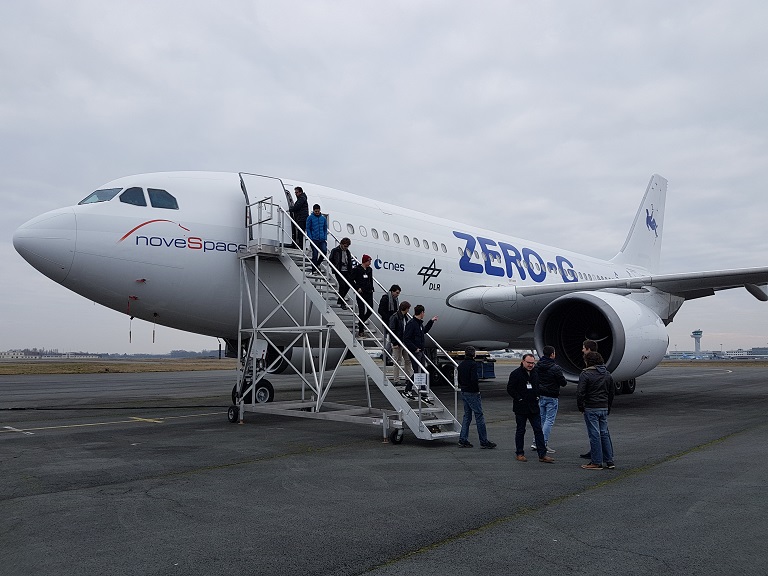
Eight months after their selection for the CNES’ parabolic flights Campaign of 2018, the Water Space Suits (WSS) team of Supméca has finally reached its goal. It’s been a long journey, but a rewarding one. In early October, the whole team got the occasion to test their experience in a situation of weightlessness, abroad the Zero-G plane.
Water Space Suits is a space suit concept, created by students, to improve astronauts’ hygiene. The current solutions are quite rudimentary as astronauts only use damp towels and dry shampoo to clean themselves.
An experience validated by Novespace’s experts
On the 14th of September, students validated an important step of the project, the technical review of their experience by a Novespace specialist, the organizing company. Their montage has been faced with the airworthiness specification requirements in order to confirm the good mechanical performance of the components: the electricity consumption, the non-contamination of the cabin by the embedded liquids and materials. More generally, it needed to confirm security and a proper answer to potential risks.
It’s only after this meeting that Novespace gave its approval for the team to participate in this project. The flight campaign started on the 24th of September in Mérignac. The team got access to the company’s preparation room for the three first days of the campaign, in order to set their experience in the building made available by the CNES.
It’s on the 3rd of October that two members of the team, Sébastien Ruhlmann and Stéphane Moret, have flown abroad the Zero-G plane. The two others, Cindy Angama and Adrien Bosquet stayed on the ground to ensure assistance.

WSS’ team students visit Novespace in early February
Regarding the establishment of the experience, the students have repeatedly changed the combination’s mechanism and strategy in the months leading up to the flight. Finally, they’ve found a solution combining technical efficiency and a limited utilization of resources. This search has greatly accentuated the load of work but in the end, this experience is as close as possible to astronauts’ genuine needs regarding hygiene. The team is on the right track to the realization of a complete combination.










